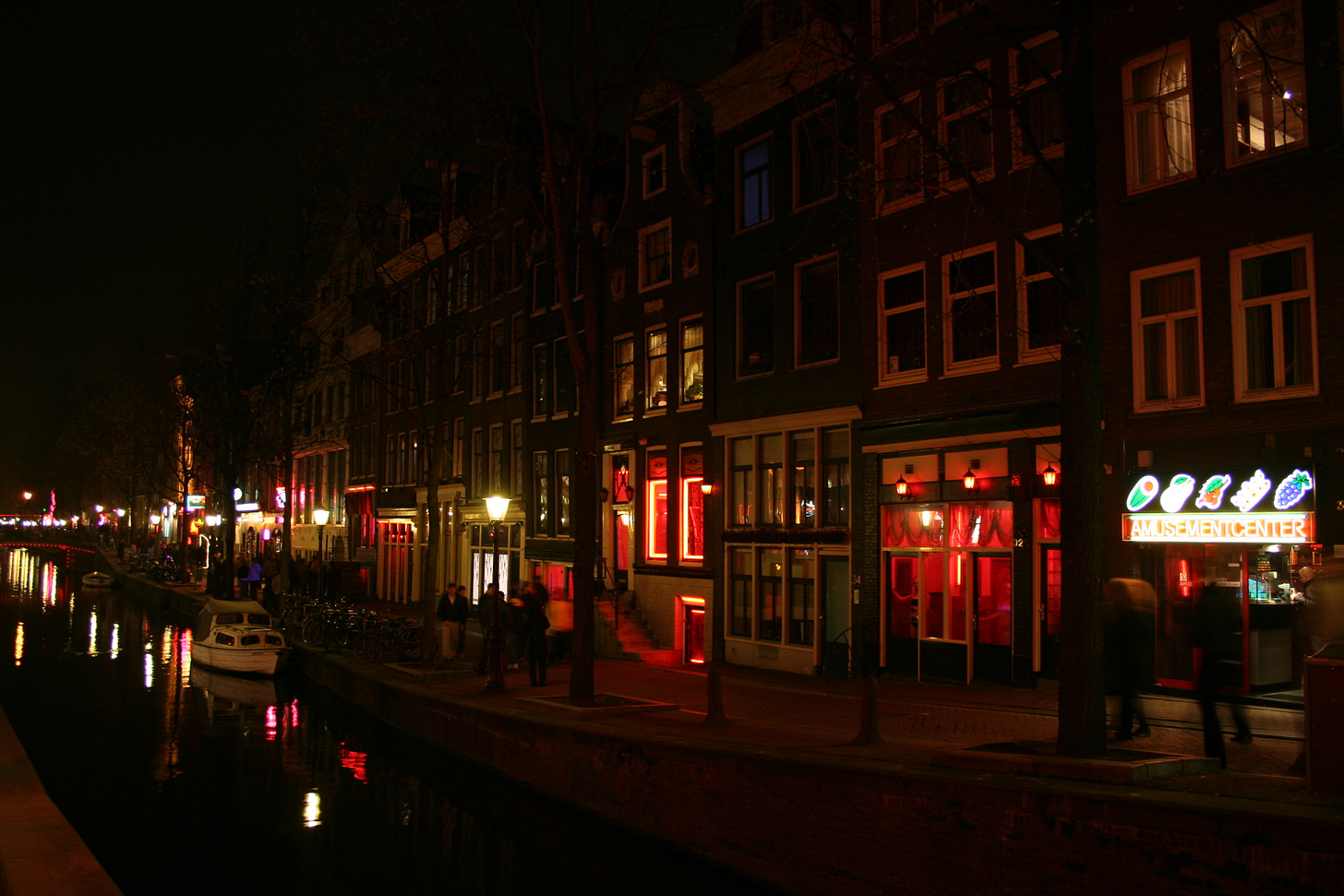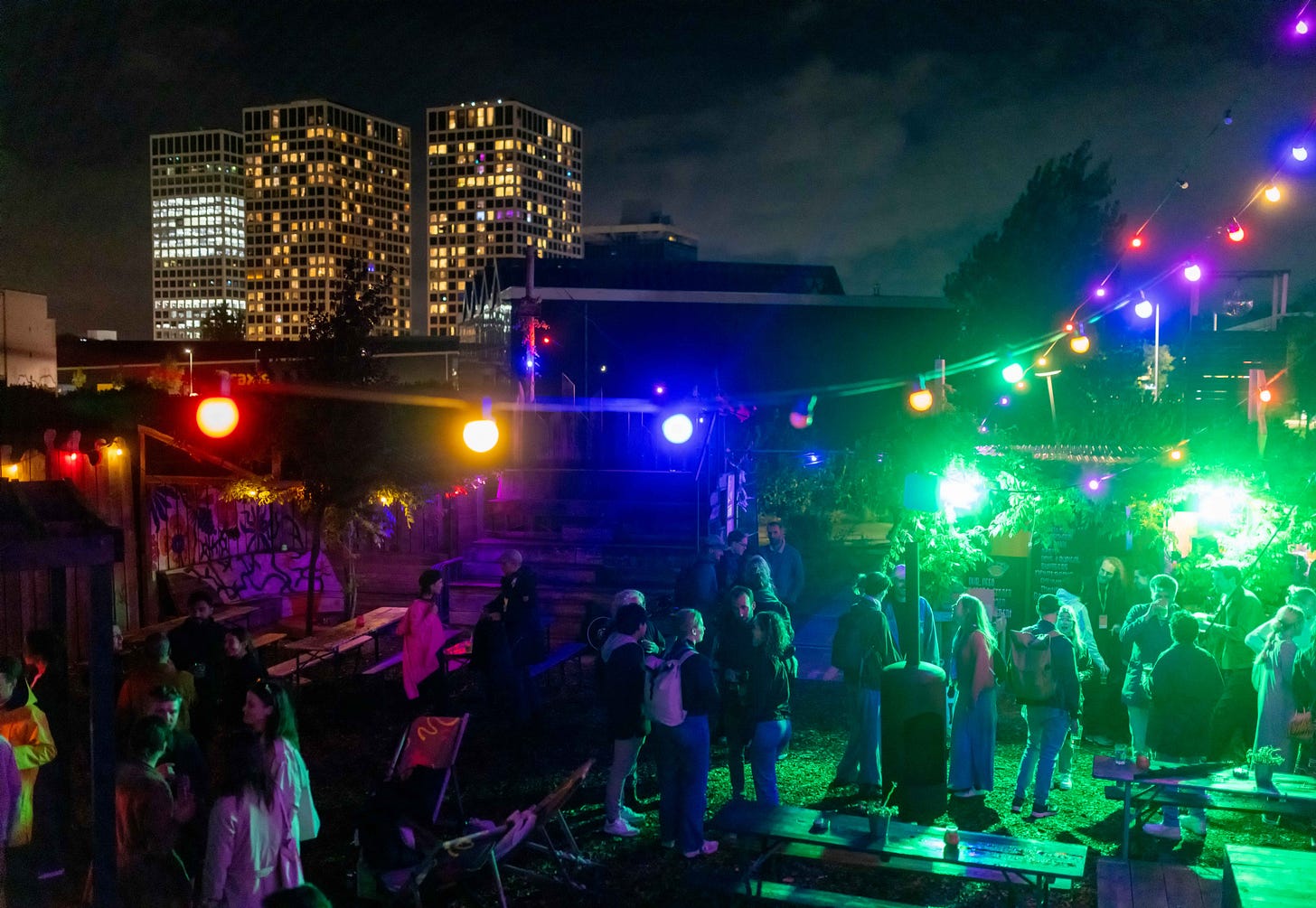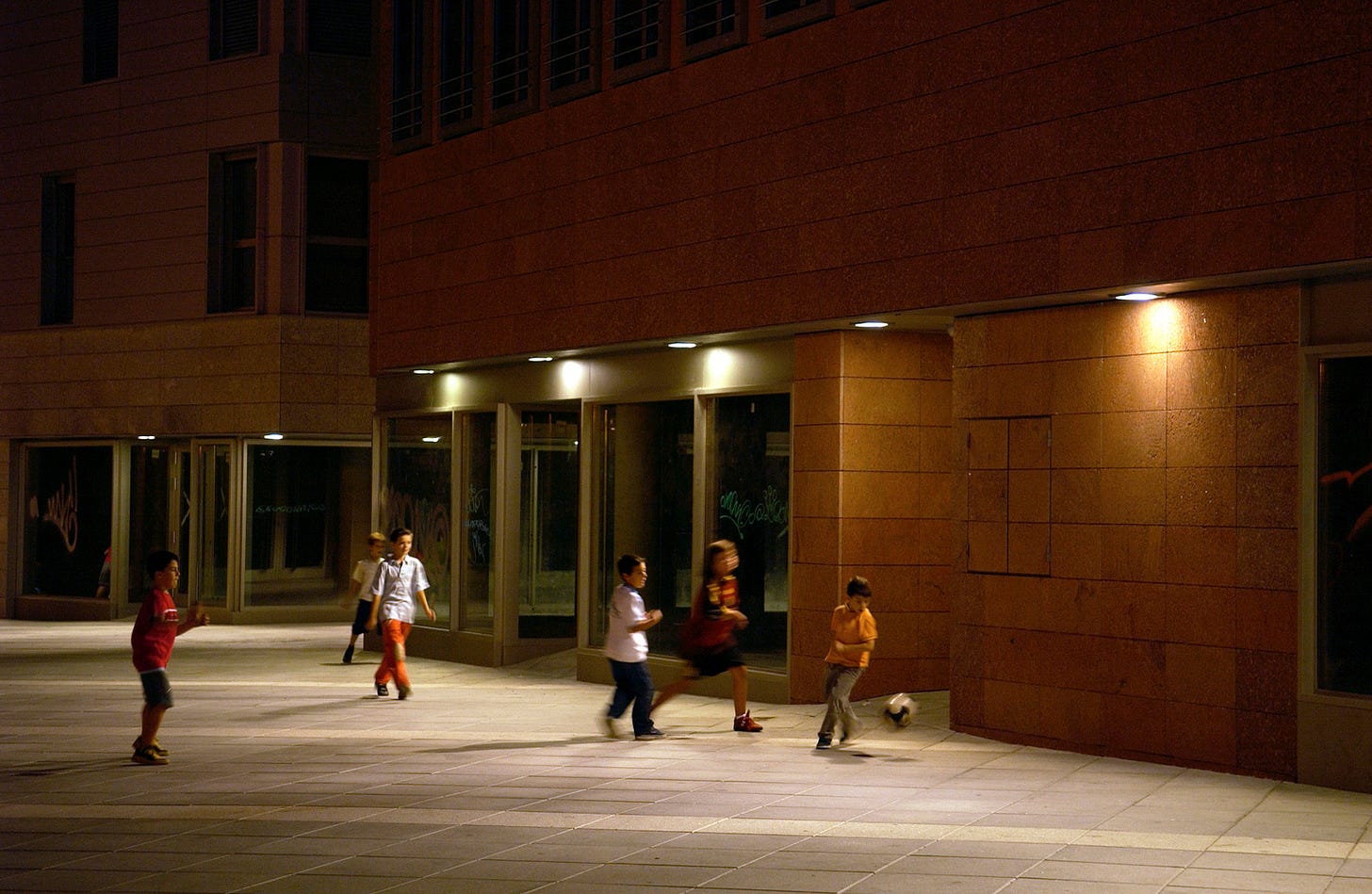Hello, readers!
As I write this, the last rays of sunlight creep from behind the blurry cranes of the Port of Rotterdam, far into the West. Light posts open their eyes and the blue of the sky dissolves into darkness.
It’s nightfall.
But, as Léopold Lambert puts it, “the Night is also a space, occupying about 50% of the Earth’s surface at any given moment”.
Darkness was made the realm of dreams and ghosts, but it is also the world of overnight drivers, on-call doctors, kiosk owners, power plant workers, sleepwalkers, ravers. Our homes, streets, cities and lands exist in darkness just as much as they exist in daylight.
However scary –or liberating, or imprisoning– the night may feel, cities worldwide cannot afford to ignore it.
Nightlife is going through a bittersweet moment – in major European cities, legendary venues and in-between, experimental spaces are closing. This is arguably the tip of a much larger iceberg, one that the pandemic made evident. Covid-19 revealed structural flaws in the nighttime economy systems, highlighting the dire financial situations that many nighttime businesses find themselves in, or the usual (and alarming) defaulting towards strict policing and surveillance to control life at night.
Flexibility, innovation, coherence, human-centric approaches – all the topics that apply to the management of cities during daytime stay relevant also after the sun has set.
And though cities worldwide have endless different ways of governing the night, through continuous dialogue and experimentation new forms of urban night governance emerge, challenging traditional approaches and sweeping away the fear of darkness, for cities will remain our homes – also after dusk.
Have a great weekend,
Nuria Ribas Costa
Communications Manager & Researcher
“Now the evening's at its noon, its meridian. The outgoing tide has simmered down, and there's a lull-like calm in the eye of a hurricane - before the reverse tide starts to set in. […] This is the deep of the night, the dregs, the sediment at the bottom of the coffee cup. […] Or as Billy Daniels sang it in Golden Boy: While the city sleeps, And the streets are clear, There's a life that's happening here.”
— Cornell Woolrich
🌎 From the world. Cities After Dark is the first EU-funded international network of European cities for the revitalisation of the night-time economy. Part of the URBACT programme, the network aims to advance the potential of the night-time economy for development, sustainability and social and economic recovery in the aftermath of the Covid-19 pandemic.
The program comprises a total of 10 European cities, led by Braga (Portugal). There are three capital cities (Paris, Tallinn and Nicosia) with structured nightlife governance systems in the case of Paris and Tallinn; medium-sized cities (Braga, Genoa, Málaga, Piraeus) aiming to improve the quality of the nightlife economy as a factor of city attractiveness and safety; and cities (Budva, Varna, Zadar) with a nightlife mainly linked to seasonal tourist flows, but willing to work to create new opportunities all year round.
🧡 From Humankind. Are cities by night really that different from cities by day? Between 2022 – 2023 we worked closely with Amsterdam Gemeente's Design & UX and Urban Innovation Departments on the city’s transformation plan for the inner city of Amsterdam. The focus of our project was on De Wallen, also known as the Red Light District. This district in the inner city of Amsterdam got its nickname from the red lights on the windows of its streets, but the complexity of the district does not end when the sun rises.
Understanding the relationships of people with these public spaces through night and day was essential to our approach, which proposed a human-centred systemic vision to turn the complexity of the objective –restoring the balance between livability and hospitality– into practical and inspiring steps that keep the wellbeing of the diverse groups of Amsterdam citizens central. Read more about the project here.
🚲 From the Netherlands. In 2024, VibeLab, a Berlin-based data-driven research, consultancy and advocacy agency dedicated to supporting nightlife culture published the report Creative Footprint Rotterdam, a research unpacking the cultural value and impact of music and nightlife in Rotterdam. The report contains valuable data on spatial use for culture in the city, policy advice and programming insights –as well as challenges– in Rotterdam.
Creative Footprint Rotterdam was commissioned by N8W8 R’DAM, Rotterdam’s independent night council, and financially supported by Gemeente Rotterdam. Founded in 2019, N8W8 is dedicated to to fostering a vibrant, safe and accessible nightlife in Rotterdam. By uniting experts and those with lived experiences, facilitating connections, and addressing social issues, N8W8 R'dam plays a vital role in strengthening and advocating for the nightlife sector in Rotterdam.
📚 Dive Deeper. In this interview on ArchDaily Venezuelan researcher and urban policy consultant Andreina Seijas debunks some of the myths around cities at night. “Managing cities after dark”, she says “is the new urban frontier.” Populated by misconceptions and prejudices, the night has long remained the realm of reactive and repressive measures, instead of approaches harnessing its full potential.
From her doctoral thesis to a paper on the role of night mayors worldwide, Andreina has extensively studied how cities can become safer, more inclusive and productive by creating quality spaces for work and leisure after dark – anywhere in the world.






